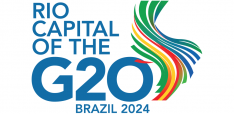Book Review - The Euro: How a Common Currency Threatens the Future of Europe

The Euro: How a Common Currency Threatens the Future of Europe by Joseph E. Stiglitz. New York: W.W. Norton & Company, 2016. 416 pp, $28.95 / £13.99 hardcover 978-0-393-25402-0, $17.95 / £8.50 paperback 978-0-393-35410-2
Some of the most significant events in Europe since the fall of the Berlin Wall – Brexit, terrorism, debt crises, unemployment, tumultuous elections, the rise of rightists – almost causes us to forget the irony of how the euro, which was supposed to bring the EU states together, could be seen as driving them apart. When the euro was adopted, it divided opinion among liberal economists and EU member states. It has been attacked by both nationalists and internationalists. Joseph Stiglitz, the Nobel Prize winner, in his recent book, provides an impressive analysis of this contentious project that is the single European currency. Stiglitz argues that the eurozone project was “flawed at birth” (p. 7), because the euro story was “uttered by politicians unschooled in economics who create their own reality” (p. xx). “While there are many factors contributing to Europe’s travails,” he argues, the euro is the “one underlying mistake” (p. 5): something which became particularly evident after the 2008 crisis.
The book is divided into four main parts. Part I describes “Europe in crisis”; Part II discusses and analyses why the euro as a single currency should be seen as “flawed from the start”; Part III adopts a critical perspective on “misconceived policies”; and Part IV looks for “A way forward?”. Stiglitz in the first three parts explains what he regards as the flaws in the eurozone structures – particularly the lack of greater risk-pooling among member states, and how the euro-currency politics smothers economic growth and causes deep social problems and steep unemployment. Stiglitz argues that “it was not simply that the eurozone was not structured to accommodate Europe’s economic diversity; it was that the structure of the eurozone, its rules and regulations, were not designed to promote growth, employment, and stability” (p. 8). The problems have emerged out of policies that the region has pursued, especially within the crisis countries – Portugal, Ireland, Greece, Spain and Cyprus.
Stiglitz has been critical about the euro project from the outset, in the 1990s. However, in this book, he refers not only to the large number of very different economies squeezed into a single currency, but about the failure to provide “institutions that would make it work” (p. xii). Also, the author sees an additional problem in Germany because it “has used its economic dominance to impose its own views, and those views are not only rejected by large parts of the eurozone but also by the majority of economists” (p. 22). In Stiglitz’s view, the euro as a political project was pursued without a proper understanding of what a monetary union meant. Hence while Germany and others have sought to blame the victims, it is the flawed policies and structure of the eurozone that are really to blame for the poor performance and for the multiple crises emerging from Europe since its inception.
 A successful single currency, it is argued in this book, requires structures that would make the prosperous nations support the less prosperous with actual money and cross-border guarantees. Also, in Stiglitz’s view, without a minimum degree of risk-sharing, no monetary union can survive and function effectively. The “Troika” institutions (the International Monetary Fund, the European Central Bank, and the European Commission) are accused of obsessing over inflation rather than job creation. As for money that is lent to crisis countries, the author claims that “the Troika’s grasp of the underlying economics was abysmal ... downturns were largely because the [crisis] countries had faithfully followed the Troika’s instructions” (p. 178).
A successful single currency, it is argued in this book, requires structures that would make the prosperous nations support the less prosperous with actual money and cross-border guarantees. Also, in Stiglitz’s view, without a minimum degree of risk-sharing, no monetary union can survive and function effectively. The “Troika” institutions (the International Monetary Fund, the European Central Bank, and the European Commission) are accused of obsessing over inflation rather than job creation. As for money that is lent to crisis countries, the author claims that “the Troika’s grasp of the underlying economics was abysmal ... downturns were largely because the [crisis] countries had faithfully followed the Troika’s instructions” (p. 178).
Stiglitz is right to indict these institutions for imposing austerity, and in pointing out that both austerity and the structural reforms failed to bring the crisis to an end. By blaming the crisis countries and focusing on fiscal deficits, Germany and others in the eurozone had “misdiagnosed the source of the problem” (p. 18). The author makes a convincing case that the criteria for euro membership, which restrict budget deficits and national debts, prevented the expansionary fiscal response that was required to restore the countries to healthy economies and end the crisis.
One of the key arguments in the book is that without reform of the eurozone, Europe cannot return to growth. Germany, as the hegemon of the eurozone, is seen as the main barrier to this reform, because it has ruled out alternatives to the current structure. Nevertheless, Stiglitz outlines three possible ways forward. The first way is the current strategy of muddling through – “doing the minimum to keep the eurozone together but not enough to restore it to prosperity” (p. 272). The second way proposes status quo ante – in other words, a mutual “amicable divorce” of some states which would exit the eurozone and start a new currency area. This could have profoundly negative consequences on some member states. Stiglitz further claims that for some member states a reasonable well-managed divorce would function more effectively. For instance, he thinks that Greece would do far better with a divorce than under the current programs imposed upon it by the Troika (p. 267). Several difficulties in managing ‘Euroexit’ are discussed: managing the fiscal deficit, the current account deficit, and the debt; creating and maintaining a stable banking system, with a stable supply of credit to finance new investments; and creating a new financial transactions system. However, a clear literature review and critical analysis that could estimate the cost of the dissolution is missing in this part.
The third way outlined by Stiglitz, a flexible euro, would entail dividing up the euro system: a monetary arrangement whereby each country would still trade in euros, but a Greek-euro may not exchange on par with a Cypriot-euro or with a German-euro. The flexible euro keeps the concept of single currency and monetary union: but the focal point is the creation of a framework that would allow sufficient flexibility that could make the eurozone actually work. Stiglitz argues that this would not lead to the depressions associated with the current regime, and it could help to restore full employment.
The Euro: How a Common Currency Threatens the Future of Europe is an insightful reflection on the euro crisis and makes a compelling case for reforms. Despite spending much of the book strongly criticizing the euro-currency project, Stiglitz suggests that it is still worth salvaging. He argues that the euro can be saved, “but saved in a way that creates the shared prosperity and solidarity that was part of the promise of the euro” (p. 319). What unites all of the alternative approaches and euro-criticism mentioned in this book is the need for changes and reforms. Unfortunately, whether or not the leading decision-makers in Paris, Brussels, Frankfurt, and Berlin agree is very much open to question.
Hamza Preljević is a Senior Assistant in International Relations (IR) at the International University of Sarajevo, where he is a PhD student in IR. His areas of interest are the politics of Bosnia and Herzegovina, Western Balkan studies, EU integration, EU foreign policy, and security studies – with an active research focus on various aspects of transatlantic relations and NATO’s relations with the Western Balkans. He teaches on the political system of Bosnia and Herzegovina, and political violence and terrorism. ✉hpreljevic@ius.edu.ba
Photo credit: Foter.com CC0 1.0 Universal (CC0 1.0) Public Domain Dedication


